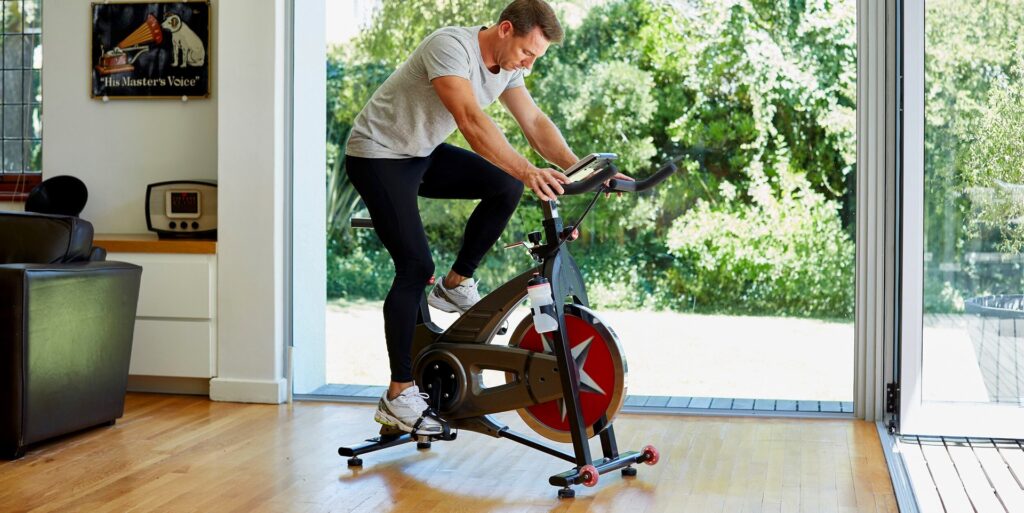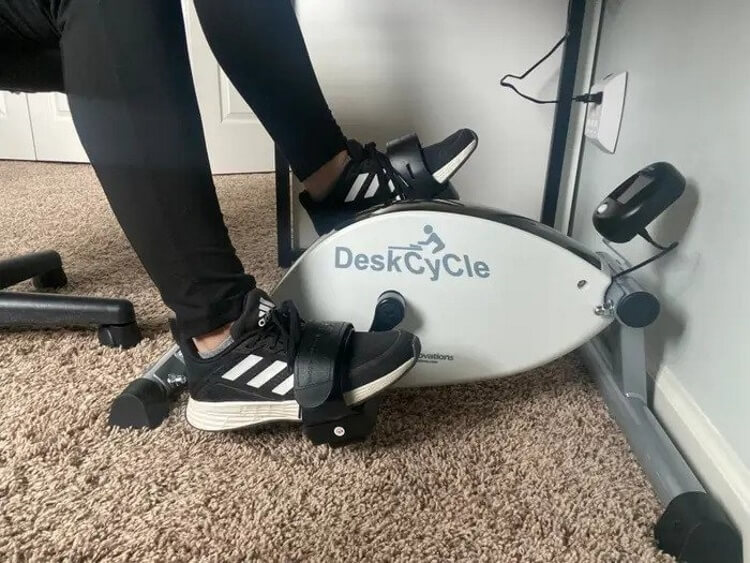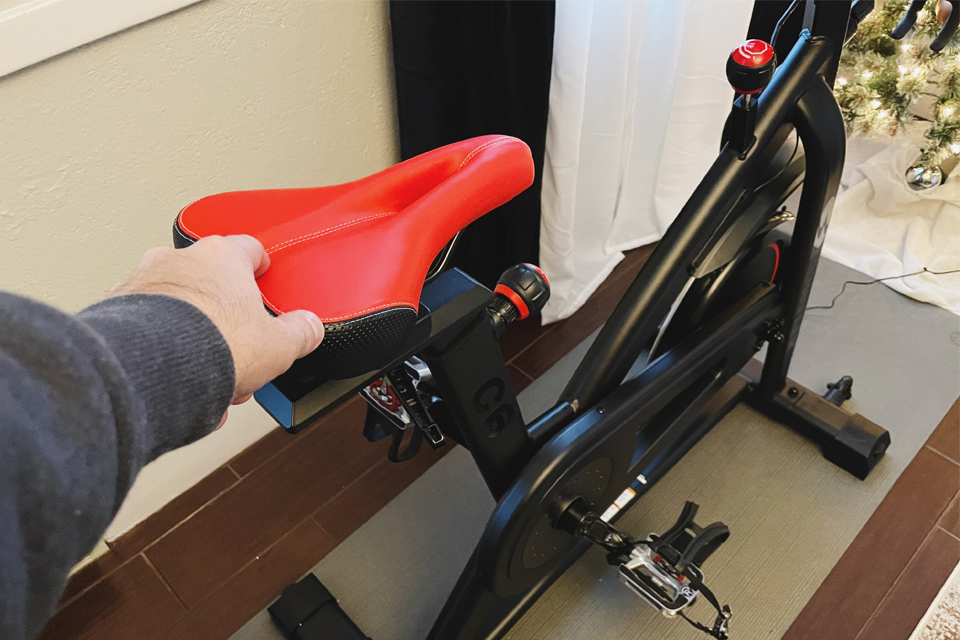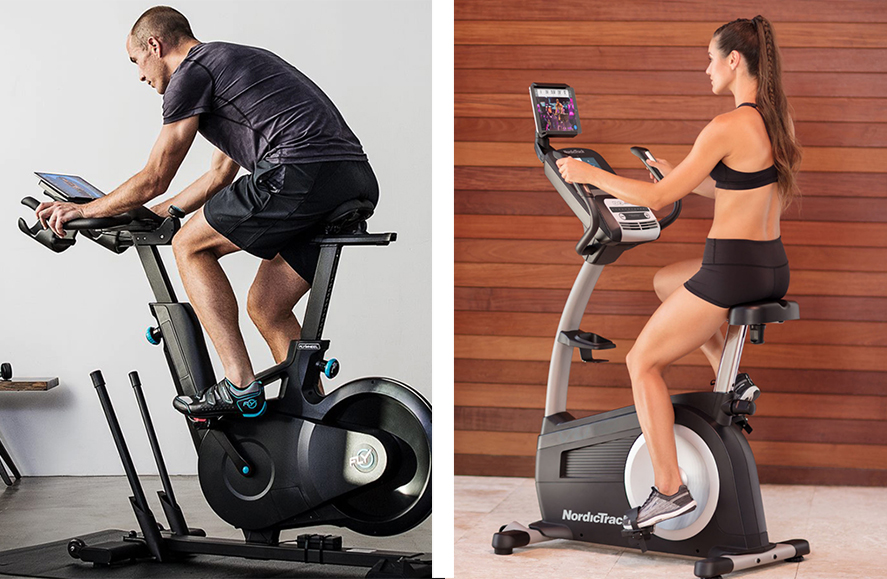The magnetic resistance exercise bike has taken over the ‘top position’ from the flywheel and other types of resistance bikes. Yet, it is the most expensive. Why? That is exactly what will be looked at in this guide today. But before jumping right into it, the magnetic resistance vs. flywheel situation is not necessarily a battle. This is because both exercise bikes contain a flywheel. A flywheel is a necessity for all exercise bikes. According to Oxford Dictionary, it is an enormous rotating wheel that helps to create momentum in a machine as well as power and stability. So, without a flywheel, none of these exercise bikes can even be called a bike. Then, what is the real debate about? It is about the kind of resistance between two commonly used and mentioned exercise bikes – magnetic resistance and direct contact resistance. So, if you are ready to get educated on the difference between a magnetic resistance exercise bike and a direct contact flywheel bike, keep reading.

Paired together, it is when there is an obstruction to movement, powered by magnetic influence. Magnetic resistance in exercise bikes uses magnets to create friction and tension against the flywheel – like brakes but without a brake pad. It makes use of magnetism and electricity to stop or reduce the momentum created with the flywheel. How does it work? Since electricity affects magnetism Trusted Source Magnets and electricity - U.S. Energy Information Administration (EIA) Magnets are different because the molecules in magnets are arranged so that their electrons spin in the same direction. This arrangement and movement creates a magnetic force that flows out from a north-seeking pole and from a south-seeking pole. This magnetic force creates a magnetic field around a magnet. www.eia.gov by making a magnet more or less powerful, passing electricity through these magnetic brakes would alter the level of power the magnets have to stop or lower the velocity of the flywheel. This smooth interaction between electricity and magnetism in an exercise bike helps to provide a fierce workout experience. It is also an especially great exercise bike for short people and those that wish to walk on their stamina and athletic strength.

This was the best version of exercise bikes until magnetic bikes took over. But they remain in the market because they are the most cost-effective exercise bikes you can find in the market today, with an efficient mechanism for great workouts. The pads for this exercise bike are made from different materials but most especially felt. However, all direct-contact exercise bikes do not have to be built with brake pads. Some come with friction bands Trusted Source Brake-band Definitions | What does brake-band mean? | Best 1 Definitions of Brake-band A flexible, lined band that serves as a braking force by creating friction when tightened about a spinning shaft or drum, as in the automatic transmission of a motor vehicle. www.yourdictionary.com and so on.
At this point, some of you might have already concluded which of the bikes is best for you. However, these are some important factors that can help you make a more precise and informed decision on the exercise bike that will suit your budget and needs.

As regards whether or not the resistance level can be adjusted, both bikes win this round. Both exercise bikes, flywheel (direct contact) and magnetic resistance can attain this effortlessly, just that the method to achieving this Trusted Source Easy Ways to Adjust Exercise Bike Resistance: 11 Steps Bend forward at the waist with your legs fully extended. Make sure your posture is correct before attempting to deal with the resistance setting. Always lean forward so you are able to keep a firm grasp on the handlebars and reach the control screen if your bike has one. Keep your back straight and your feet firmly on the pedals. If you’re on an upright bike, keep your knees directly above your feet so they don’t lock up while you’re pedaling. www.wikihow.com is different in both models; gears for the magnetic bike and contact pad settings for the direct contact bike. The accuracy, however, is another ball game. Accuracy of the resistance level is required to measure your current performance and also move towards higher goals with your training. If you cannot identify what resistance level you are currently biking with, you will not be able to know what level you should move to for improvement.
Magnetic resistance bikes are more computerized and hence give a more accurate measurement of what resistance level you are at. So if you are an athlete that requires uniform and accurate resistance training, go for a magnetic, electric bike. It is better than the direct contact flywheel bikes that require you to keep turning knobs until you think you have reached your current resistance level. But magnetic bikes aren’t the total heroes of the day. These highly affordable direct contact resistance bikes win when it comes to the range of resistance level. You can keep on increasing the resistance level of a direct contact bike until the wheels don’t move.
That is why it is great for those that want to build strength with no need for uniformity. Magnetic bikes, on the other hand, have a minimum and maximum resistance range.
Here, magnetic bikes win because the constant friction that occurs with the direct contact exercise bikes makes the pads wear out after a while. This means that the maintenance cost for the bike is higher as a result of the frequent mechanical repair despite the many benefits of stationary bike workouts. Trusted Source Stationary Bike Workout Benefits and Exercise Plans A stationary bike workout has many benefits. It can boost your cardio fitness, build muscle strength, help with weight loss, and burn body fat while limiting the impact on your joints. www.healthline.com The electromagnetic version lacks any form of contact, so no wear and tear are in view. Where you would need to keep replacing the brake pads and maybe even the flywheel of a direct contact stationary bike, you need not do any of that for a magnetic bike.
For commercial gyms, this might not be much of a concern since there would probably be tons of other equipment making noises with a music player at the center of the studio. But if you wish to own a stationary bike for home use, then the noise is an important factor. The magnetic resistance system is much quieter and hence the better option for you. In a direct contact resistance system, the brake pads touch the flywheel while trying to slow down the momentum and hence, generates noise from the friction.
Though this depends on many other factors like the weight of the flywheel, the design of the bike, height, additional features, and so much more, nonetheless, a magnetic resistance bike is lighter and easier to move around than the flywheel-based bikes. Direct contact bikes include additional mechanical parts that add to the weight, making them heavier.
Despite it being the last factor on this list doesn’t make it any less important. You also have to consider your budget before deciding which stationary bike you should go for. Once and for all, flywheel, direct contact resistance bikes are cheaper than magnetic bikes. This is because the latter comes with additional features like an LED screen, programmable buttons, and so on. This gives it a more modern and expensive look. This does not mean that a flywheel bike is any less great. It is only cheaper because riding one gives you the feeling of a traditional bike with brake pads and tall seats.
After reading through the guide above, you might have a few questions to help you better understand the difference between the two bikes and the concept of resistance-level bikes overall. Below are a few popularly asked questions and the answers to them.
The answer is relative because magnetic resistance is better in some ways and isn’t in others. When it comes to the resistant levels, magnetic bikes are more accurate but have a fixed range and can be limiting. Friction resistance bikes are not accurate, noisy, and heavier but have an unlimited resistance range.
A magnetic exercise bike uses both magnets and electricity to reduce or stop rotary momentum generated with the bike’s flywheel. Instead of using brake pads as with a friction-based exercise bike, electricity is used to alter the power of attraction the magnets have to reduce or stop the speed of the flywheel.
Yes, magnetic exercise bikes are quieter than any other bike resistance type. This is especially because the method for speed reduction is 100% non-contact. Since friction is not generated and there is no contact between the flywheel and the magnetic pads, then quietness is guaranteed.
The best flywheel weight is somewhat relative to individuals because some indoor cyclists would rather have the outdoor experience while others want a strict studio experience. However, anything above 20 pounds is ideal for the right level of speed whole 40LBS is considered the best by the masses.
A flywheel is a necessity for all exercise bikes because it is the part of the bike responsible for generating rotational momentum for the workouts. The disc comes in different weights and can either be designed at the back or front of an exercise bike. When the cyclist starts to pedal, the flywheel spins, and energy is generated.
Yes, the flywheel weight matters. It follows the basic principle in physics that says that the heavier a material is, the harder it is to stop it during fast movement. Therefore, when you get a heavier flywheel, the resistance impact will be higher.
Magnetic resistance exercise bikes, as mentioned earlier, didn’t always use to be the top dog with exercise bikes. It is only a recent development that seems to have won the hearts of many athletes and gym enthusiasts. However, during comparing magnetic resistance vs flywheel bikes, it is quite understandable why this is the case. The magnetic stationary bike system produces less noise, is more accurate when it comes to the resistance level, is easier to transport from one place to another, and costs less for maintenance. It is also a better option for everyone since it helps for a more intense muscular strength and stamina workout. Aside from that, a direct contact bike is cheaper, and there isn’t much advantage of this resistance bike type over the magnetic bike.





